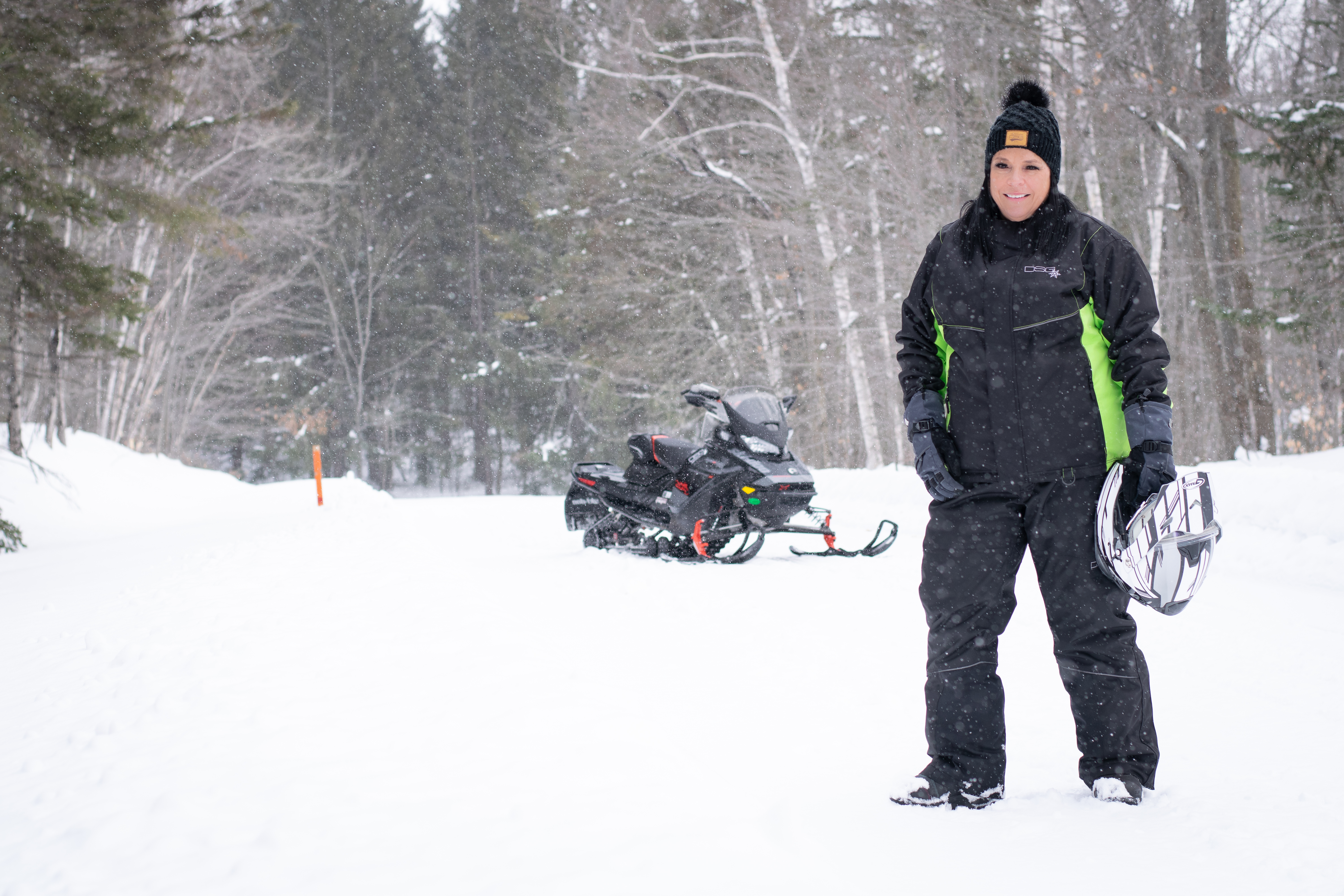What You Need to Know Before Purchasing a Used Snowmobile
Posted by Samantha Simma on Oct 9th 2022
Ready to hit the snow this winter?! If you still need to acquire a machine, you may be considering purchasing a used snowmobile. Buying a used snowmobile can seem scary, but it doesn’t have to be. Like all things about this sport, know-how makes everything easier.
Take a look at the following tips and use them as you do your snowmobile shopping.
1. Shop Around
Similar to most purchases, it’s best to pay attention to the market and get a feel for its price trends. Like cars, snowmobiles can be purchased from dealers or private sellers. Private sellers will sometimes offer better details, but dealers can offer warranties and ensure the snowmobile had a thorough clean-up by a mechanic before being put up for sale.

While it can be difficult to estimate what a used snowmobile is worth, look online to see what different sellers are listing their snowmobiles at. Social media sales groups have become increasingly popular, and you can quietly observe what listings are favored by other potential buyers. Trust your gut when a price seems too high and avoid snowmobiles that seem priced suspiciously low.
2. What’s Your Budget?
The best starting point for your snowmobile search is determining your budget. Keep in mind the additional purchases that snowmobile ownership will entail, so you don’t exhaust your budget on the main purchase. You’ll want some funds reserved for gas, registration, spare parts, oil, etc. Mechanically, these machines continue to evolve, and (in theory) improve, over the years. Therefore, you’ll want to strive to get the newest snowmobile within your budget (with a few exceptions).
3. Type of Snowmobile
Hopefully, in previous seasons, you’ve had the opportunity to try out the different brands, as they all handle a bit differently. If you haven’t, talk to your friends or the snowmobiling community via online groups, and openly ask for opinions. Pay the most attention to those opinions that are related to facts and mechanics, like how the steering handles.
Once you’ve honed in on a brand, you’ll need to decide if you want a 2-stroke engine or a 4-stroke. In general, 2-strokes are lighter on the snow, while 4-stroke engines tend to have greater longevity. Next, decide on your snowmobile model. The model of snowmobile you purchase should predominantly be informed by the type of riding you foresee yourself doing (i.e. trails, backcountry, etc). Finally, track size is a challenging consideration—just because there are so many options nowadays! Long tracks are geared toward riding in deep, fresh powder, as they provide greater floatation. If you’re going to stick to the trails, a short track will do (and is better for steering around sharp corners).
4. Inspect for Physical Damage
For as burly as these machines seem on the snow, their exterior components are fragile on impact. Any snowmobile you consider purchasing, thorough inspect its parts for dents, bends, warps, etc. It’s best to do this inspection in good lighting and without snow on or in the snowmobile’s parts. On the front end, make sure the A-arms are straight and that the carbides beneath the skies aren’t worn down or missing. Standing or sitting on the seat, look down to see if the skis and handlebars are straight and well-aligned. Next, look at the machine straight-on from the front and rear. You’re aiming to see if everything looks straight. At the rear of the snowmobile, look over the tunnel for any damage, which can be a huge cost if it requires replacing. Look at the rails to see if they’re past the wear mark, and inspect the track for missing or torn lugs. A few isn’t a huge deal, but a lot of wear on the track could mean it’ll needs to be replaced soon. Finally, while you’re looking at the underside of the snowmobile, pay attention to the condition of the bulkhead.

5. Under the Hood
The most daunting part of purchasing a used snowmobile is taking a peek under the hood. It can be difficult to assess the inner workings of the engine and its condition, but a few clues may point you in the right direction. For instance, the cleaner the interior appears, the healthier the sled (usually). A well-maintained snowmobile won’t have dirt and fluids all over its engines. Pay close attention to the fluids—looking at their condition, levels, and signs of leakage. Low oil levels, for example, can be a sign of poor lubrication, while discolored fluids likely means they’re rather old. Carefully inspect the clutches for any damage. Specifically, look for areas of wear and deep grooves.
Start the sled and let it run for a few minutes, to make sure that it’s revving consistently. Check the lights and electrical functions. If a lift is available, lift up the track and, using the throttle, check to see when the clutch engages. It’s also a good idea to take the extra step to remove and inspect the spark plugs. Plugs in good condition will be gray to tan in color. Any other plug defects are signs of different engine issues. While you’re doing so, and if a compression gauge is available, do a compression test on the engine. If the reading is below 120 psi, the compression is low; under 100 psi, and the sled likely needs a rebuild.
6. Fixer Uppers
Many parts on snowmobiles, especially those that are cosmetic, can be fixed. If there’s a snowmobile you’re eyeing that has a few dents and dings, just be sure to weigh a few pros and cons before committing to a fixer upper. The extent of the damages is entirely a case-by-case situation. Some mechanical and aesthetic fixes can be pretty straightforward, but you should get an estimate of the costs entailed before moving forward. Also, keep in mind that supply chain issues have turned even common fixes into a timely undertaking. You’d hate to buy something you can’t get out on the snow half the season because a part is broken that nobody has in stock.
7. Eye the Miles
Unlike a car, snowmobiles aren’t meant to run for miles on end. Any snowmobile with 8,000 miles is considered to have high mileage. The lower the miles the better. You’ll likely encounter differing opinions on which to prioritize—the age or milage of the snowmobile. Undoubtedly, the more miles on the snowmobile, the more you should proceed with caution in your purchase.
8. Warranties
A snowmobile that still has a warranty has some added value. An extended warranty means that the manufacturer will deal with problems that arise until that warranty runs out. In that case, you can focus on your riding, not fixing your new toy if it breaks down—as these machines often do!

9. Ask Questions
The best way to get to know a sled’s history is through its previous owner. Make sure that you ask as many questions as possible about the snowmobile—anything that will help inform your decision and give you greater peace of mind. Some common questions include: how has the snowmobile been transported; how was it stored; what type of terrain has it been ridden on; where has it been maintained; how many average rides per season did they take it on, etc. Compare the amount of riding they describe and see if coincides with the number of miles on the odometer. If it’s been transported in the back of a truck or on an open trailer, look extra carefully for signs of corrosion form road salt. Finally, inquire why the snowmobile is for sale. You may not get an honest answer, but if you do, it can strengthen that authenticity of their other responses.
10. Bring a Friend
If you’re not feeling confident in your ability to shop for snowmobiles solo, bring along a friend who is more familiar with these machines. Make sure it’s someone you trust to ask the tough questions. In a perfect world, we’d all probably opt for new snowmobiles each winter. But if you budget is more restricted, don’t shy away from purchasing a used snowmobile. Just be sure to learn everything you can about the machine before your spend your hard-earned money.

